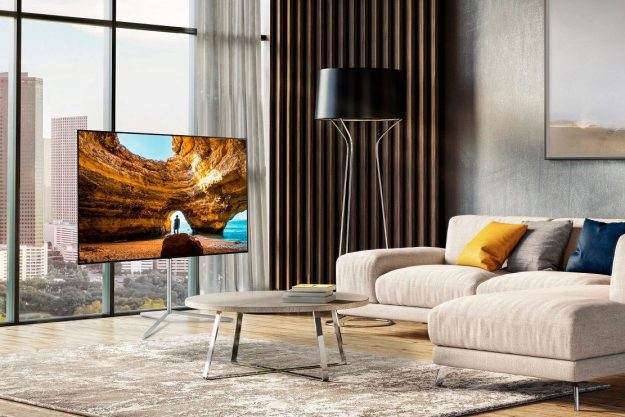 Streaming content to your Samsung Galaxy Note 8.0 tablet or iPhone 5 is about to become a lot cooler thanks to the folks at DTS. We’re big fans of watching films via Netflix, Amazon Instant Video, or Vudu on tablets and smartphones, but one of the biggest limitations has always been that surround sound encodes are bandwidth pigs. If we can watch 1080p streaming video on our portable devices, why can’t we listen in DTS-HD Master Audio 5.1 or Dolby TrueHD as well? Soon, we’ll be able to. With the launch of DTS-HD Layered Audio, online media services will now be able to offer adaptive bit-rate audio streaming from a single encode.
Streaming content to your Samsung Galaxy Note 8.0 tablet or iPhone 5 is about to become a lot cooler thanks to the folks at DTS. We’re big fans of watching films via Netflix, Amazon Instant Video, or Vudu on tablets and smartphones, but one of the biggest limitations has always been that surround sound encodes are bandwidth pigs. If we can watch 1080p streaming video on our portable devices, why can’t we listen in DTS-HD Master Audio 5.1 or Dolby TrueHD as well? Soon, we’ll be able to. With the launch of DTS-HD Layered Audio, online media services will now be able to offer adaptive bit-rate audio streaming from a single encode.
DTS-HD Layered Audio utilizes advanced features of the DTS-HD codec to create and efficiently store adaptive bit-rate audio streams from a single encode, allowing online media services to better accommodate the challenging network conditions of over-the-top (OTT) broadband video streaming. Some of the benefits of DTS-HD Layered Audio include adaptive bit-rate audio streaming at almost no additional cost from a single encode, a smaller storage footprint compared to traditional adaptive bit-rate audio solutions, and it eliminates the need to time align multiple encodes of the same track at various bit-rates; which is an issue with live streaming. Multiple encodes slow everything down.
DTS is launching this product with a number of partners, including Manzanita Systems and Unified Streaming. Manzanita is demonstrating DTS-HD Layered Audio at NAB 2013 with its new MP4 Multiplexer (MP4Mux v2.0), due to be released in May.
“Manzanita Systems is excited to incorporate DTS’ latest technology for enabling high efficiency adaptive bit-rate audio for our customers,” said CEO, Greg Vines. “DTS-HD Layered Audio allows services to stream using adaptive bit-rate audio at almost no additional storage cost over a single encode—a great benefit for today’s challenging network environments.”
Unified Streaming has implemented the new codec into its Unified Streaming Platform (USP) which allows them to deliver adaptive streaming to any screen or device from a single source.
What does this mean for consumers?
Watching streaming content now with more complex audio codecs; high-resolution audio and HD surround formats, will become a reality and take up a lot less bandwidth. DTS is clearly committed to pushing the envelope in regard to the streaming experience; both on the software and hardware end.


